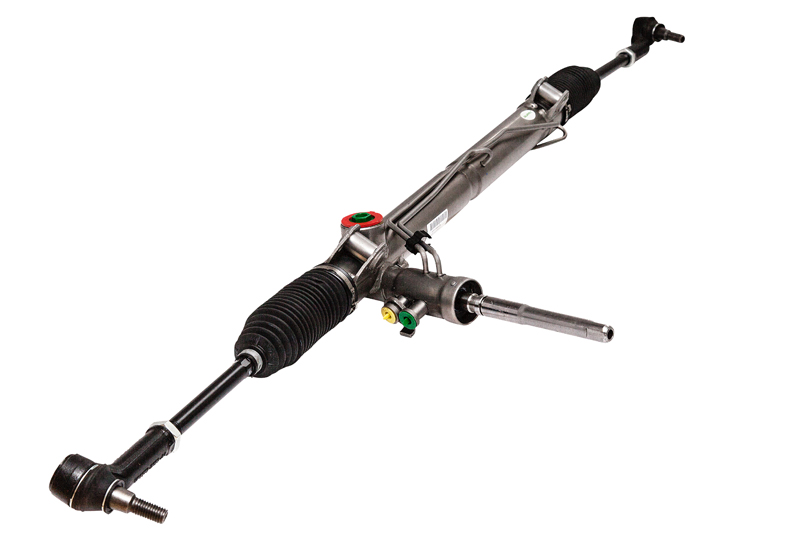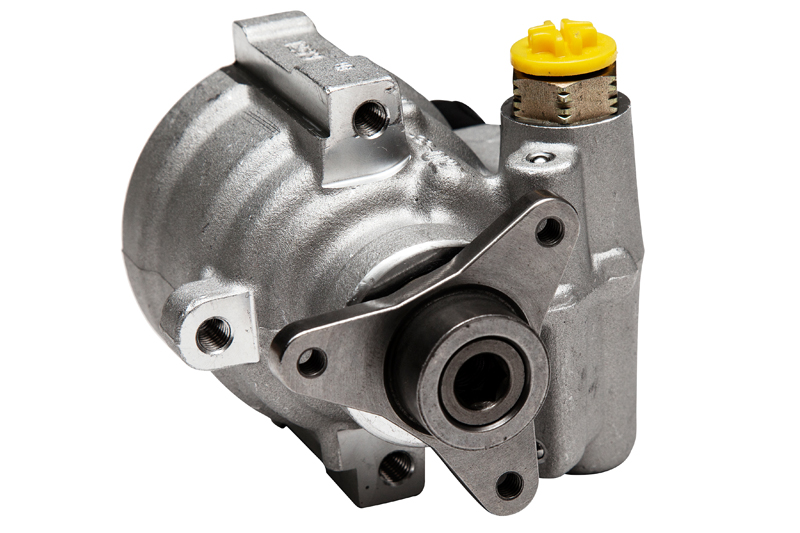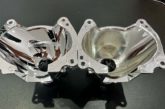Shaftec explains why it’s so crucial that steering racks and pumps are regularly flushed.
While power steering systems on cars have been around since the 1950s, the technology is seeing a gradual shift from the original hydraulic systems to electric power steering (EPS). This is due to increasing pressure on vehicle manufacturers to achieve better fuel consumption and reduce exhaust emissions.
“As all contaminants originate from inside the enclosed circuit, the only way to prolong the life of a pump is to change the fluid regularly, flushing the system thoroughly every time.”
The biggest changes have been:
- Replacing traditional hydraulic pumps, which are powered directly by the engine and can drain up to 10hp under load, with electric motors. These are attached directly to the steering rack or to the electric steering column (ESC) and have the added benefit of reduced noise levels caused by the operating pump.
- Changing the design of steering pumps from the traditional hydraulic pumps to electro-hydraulic power steering (EHPS) pumps. Operating independently of the engine, EHPS pumps work only when steering assistance is required. The bonus here is light steering support at manoeuvring speeds, and a firmer feel at motorway speeds.

All this translates into a huge range of parts with diverse technologies and varying complexities, requiring remanufacturers, motor factors and garages to look into and invest in. What hasn’t changed, however, is the basic make-up and the fact that all systems (apart from those on electric and some hybrid vehicles) use fluid to make them work.
The steering system consists of several items: a rack and pinion connected to the front wheels; a piston inside the rack and pinion, which is moved by pressurised fluid from the power-steering pump that helps to turn the wheels; and a cylinder containing fluid mounted on the pump or remotely mounted for easier access.
If there isn’t enough fluid, steering becomes more difficult and parts can become damaged. Low fluid levels can also be the first sign of a bigger problem as it may indicate a leak – and for everything to work as it should, the fluid level should not be allowed to drop. It’s therefore vital to regularly check power-steering fluid levels and top up when necessary.
Pumps and racks will live longer if the system is flushed regularly. Systems deteriorate over time. As the system ages, small particles start to break off. Then it snowballs…
Contaminants are suspended in the steering fluid, which then becomes abrasive. The abrasive action then speeds up wear in other parts. Contaminants from rubber pipes and particles of metallic swarf from other areas – such as the impellers of the pump – gradually build up, causing more wear. This, together with fluid oxidisation, which propels the build-up of air and results in further inefficiencies and noise, causes ongoing deterioration until… the system fails.
As all contaminants originate from inside the enclosed circuit, the only way to prolong the life of a pump is to change the fluid regularly, flushing the system thoroughly every time. Because the contamination collects inside the system where you can’t see it, the effects are hardly noticeable until the system fails.
Because of this, there is an ongoing debate as to whether fluid change should be a standard part of the service schedule. And of course, if the system has failed, it’s highly likely that there are raised levels of contaminants in the lines, making it even more important to flush the whole thing out before fitting a new part.

Fitting a new part without flushing out the system would be foolish and counterproductive. With raised levels of contaminants in the lines, the fluid would still be abrasive. When you get in there, although you can sometimes tell if the fluid is contaminated by its darker colour, or feel particles between your fingers, you should not take a risk.
Before any change, the system should be flushed properly using a professional machine which sucks out all of the old fluid and any contaminants. Only after washing it through thoroughly with a flushing agent until it runs clear, should new fluid be added.
It’s also important to clean out the reservoir because any larger particles will settle at the bottom as the fluid circulates. If you don’t, when the new fluid is poured into the reservoir, any silt remaining at the bottom will be forced straight back into the system, causing a leak almost instantly.










